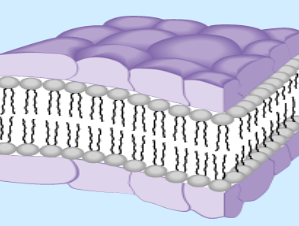Cell Membrane
Table of Contents
Definition

- a membrane made of phospholipid bilayer with embedded proteins that separates insides of the cell from its environment.
- it is about 8 nanometer thick
Models
Railroad Track

- Done in 1935
- Hugh Davson and James Danielli
- the structure resembles a sandwich, with protein similar to the bread and lipids similar to the filling.
Fluid Mosaic Model

- in the 1950s, advances in microscopy allowed researchers to see more and they found out that the membrane is composed of double rather than single layer.
- Done in 1972
- Seymour Singer and Garth Nicolson
- The structure & functions of the membrane as a mosaic of components.
Functions
Protection
- serves as barrier that separates inside of the cell from its surrounding.
Material Transport
- Semi-Permeable Membrane that regulates what goes in and out of the cell.
Cell Shape
- serves as the attachment point of the Cytoskeleton which aids in maintaining the shape of the cell.
Compartmentalization
- separates organelles from each other and from the cytoplasm
Cell Recognition
- enables cells to identify other cells and foreign substances (like virus).
Cell Function
- plays a vital role in the performance of the cell's function.
- Locomotion
- Absorption
- Impulse Transmission